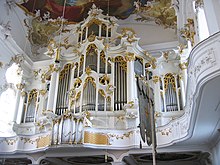
Ettal Abbey is a Benedictine monastery in the village of Ettal close to Oberammergau and Garmisch-Partenkirchen in Bavaria, Germany. With a community of more than 50 monks, with another five at Wechselburg, the Abbey is one of the largest Benedictine houses and is a major attraction for visitors.

Weißenhorn is a town in the district of Neu-Ulm in Bavaria. Weißenhorn is located about 22 km southeast of Ulm.

Oberalteich Abbey was a Benedictine monastery in Bogen, Bavaria, Germany.

Wettenhausen Abbey was an Imperial Abbey of Augustinian Canons until its secularization in 1802–1803. Being one of the 40-odd self-ruling Imperial Abbeys of the Holy Roman Empire, Wettenhaussen Abbey was a virtually independent state. Its abbot had seat and voice in the Imperial Diet, where he sat on the Bench of the Prelates of Swabia. At the time of secularization, the Abbey's territory covered 56 square kilometers and it had about 5,400 subjects.

Elchingen Abbey was a Benedictine monastery in Oberelchingen in Bavaria, Germany, in the diocese of Augsburg.
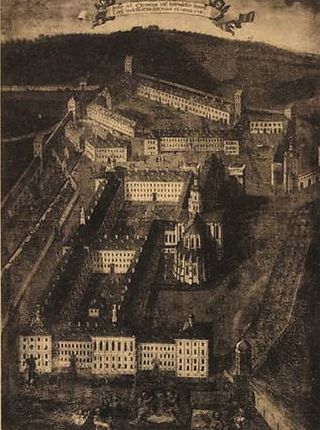
The Imperial Abbey of Kaisersheim, was a Cistercian monastery in Kaisersheim, Bavaria, Germany.

Weissenau Abbey was an Imperial abbey (Reichsabtei) of the Holy Roman Empire located near Ravensburg in the Swabian Circle. The abbey, a Premonstratensian monastery, was an Imperial Estate and therefore its abbot had seat and vote in the Reichstag as a prelate of the Swabian Bench. The abbey existed from 1145 until the secularisation of 1802-1803.

Schussenried Abbey is a former Catholic monastery in Bad Schussenried, Baden-Württemberg, Germany. It is famed for its Baroque library hall. The abbey was established in the 12th century by the Premonstratensian Order and made an Imperial Abbey in the 15th century. The monastery sustained immense damage in the Thirty Years' War. In the 18th century, the abbey began expansions in the Baroque style, but was unable to complete them. The abbey was secularized in 1803 and twice awarded during the process of German Mediatization, eventually becoming a possession of the Kingdom of Württemberg. Its second king, William I, opened a foundry on its grounds, which was followed by a nursing home. These ceased operation or moved out of the monastery in the 1990s.
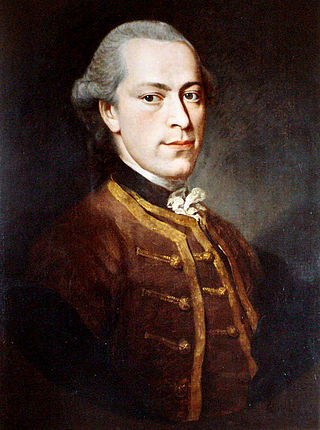
Johann Rasso Januarius Zick was a German painter and architect. He is considered to be one of the main masters of the Late-Baroque.

St. Ulrich's and St. Afra's Abbey, Augsburg is a former Benedictine abbey dedicated to Saint Ulrich and Saint Afra in the south of the old city in Augsburg, Bavaria.
Ursberg Abbey is a former Premonstratensian monastery, now a convent of the Franciscan St. Joseph's Congregation, situated in the small village of Ursberg in the district of Günzburg, Bavaria.

Wiblingen Abbey was a former Benedictine abbey which was later used as barracks. Today its buildings house several departments of the medical faculty of the University of Ulm. The former abbey is located south of the confluence of the rivers Danube and Iller, south of the city of Ulm in the German state of Baden-Württemberg. Administratively, the former independent village of Wiblingen now belongs to the city of Ulm. The abbey is part of the Upper Swabian Baroque Route.

Marchtal Abbey is a former Premonstratensian monastery in Obermarchtal in the Alb-Donau-Kreis, Baden-Württemberg, Germany. The minster church of Saints Peter and Paul, the former abbey church, located on a prominent elevation, still dominates the landscape for miles around.

St. George's Abbey, Isny in Isny im Allgäu in Baden-Württemberg, Germany, is a former Benedictine abbey founded in 1096 and secularised in 1802.

Windberg Abbey is a Premonstratensian monastery in Windberg in Lower Bavaria, Germany.
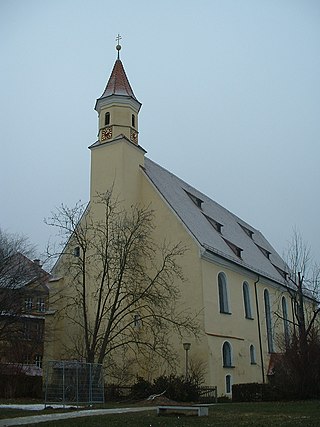
Söflingen Abbey was a nunnery of the Order of Poor Ladies, also known as the Poor Clares, the Poor Clare Sisters, the Clarisse, the Minoresses, or the Second Order of St. Francis. It was situated in the village of Söflingen, now part of Ulm in Baden-Württemberg, Germany. Being the oldest nunnery of this order in Germany, it was also its most important and most affluent.

Steinfeld Abbey is a former Premonstratensian monastery, now a Salvatorian convent, with an important basilica, in Steinfeld in Kall, North Rhine-Westphalia, Germany.

St. Burchard's Abbey was a Benedictine monastery in Würzburg, Germany, initially known as St. Andrew's Abbey. It was the first abbey established in Würzburg, founded ca. 750. In 1464, it was transformed into a Stift.
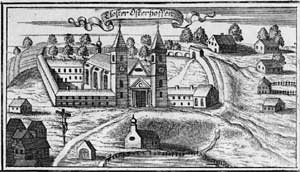
Osterhofen Abbey is a former monastery in Bavaria, Germany, It is located in the Altenmarkt section of Osterhofen, a town to the south of the Danube between Deggendorf and Vilshofen / Passau. It has its origins in a collegiate built in 1004–09. From 1128 to 1783 it was a Premonstratensian monastery. For a while it was then a convent. Today it contains a girls' secondary school. The former abbey church, a magnificent late baroque building erected in 1726–40, is now the Basilica of Saint Margaret.



